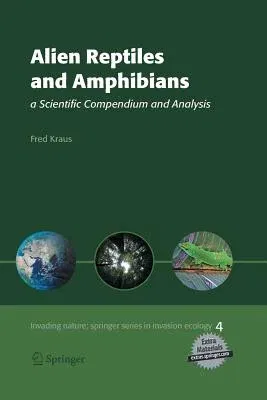Fred Kraus
(Author)Alien Reptiles and Amphibians: A Scientific Compendium and Analysis (2009)Paperback - 2009, 23 November 2014

Qty
1
Turbo
Ships in 2 - 3 days
In Stock
Free Delivery
Cash on Delivery
15 Days
Free Returns
Secure Checkout

Part of Series
Invading Nature - Springer Invasion Ecology
Part of Series
Invading Nature - Springer Series in Invasion Ecology
Print Length
563 pages
Language
English
Publisher
Springer
Date Published
23 Nov 2014
ISBN-10
9400789505
ISBN-13
9789400789500
Description
Product Details
Author:
Book Edition:
2009
Book Format:
Paperback
Country of Origin:
NL
Date Published:
23 November 2014
Dimensions:
23.39 x
15.6 x
2.97 cm
Genre:
Ecology
ISBN-10:
9400789505
ISBN-13:
9789400789500
Language:
English
Location:
Dordrecht
Pages:
563
Publisher:
Series:
Weight:
793.79 gm